Sleep Challenges In Autism And Practical Solutions
Understanding the Scope of Sleep Challenges in Autism
Sleep disturbances are a common and persistent issue among individuals with autism spectrum disorder (ASD), affecting between 50% and 80% of children, adolescents, and adults. These sleep problems significantly impact health, behavior, mood, and cognitive functioning, posing challenges not only for individuals but also for their families. Grasping the complexities of sleep issues in autism is essential for implementing effective management strategies tailored to individual needs.
Common Sleep Problems in Autism
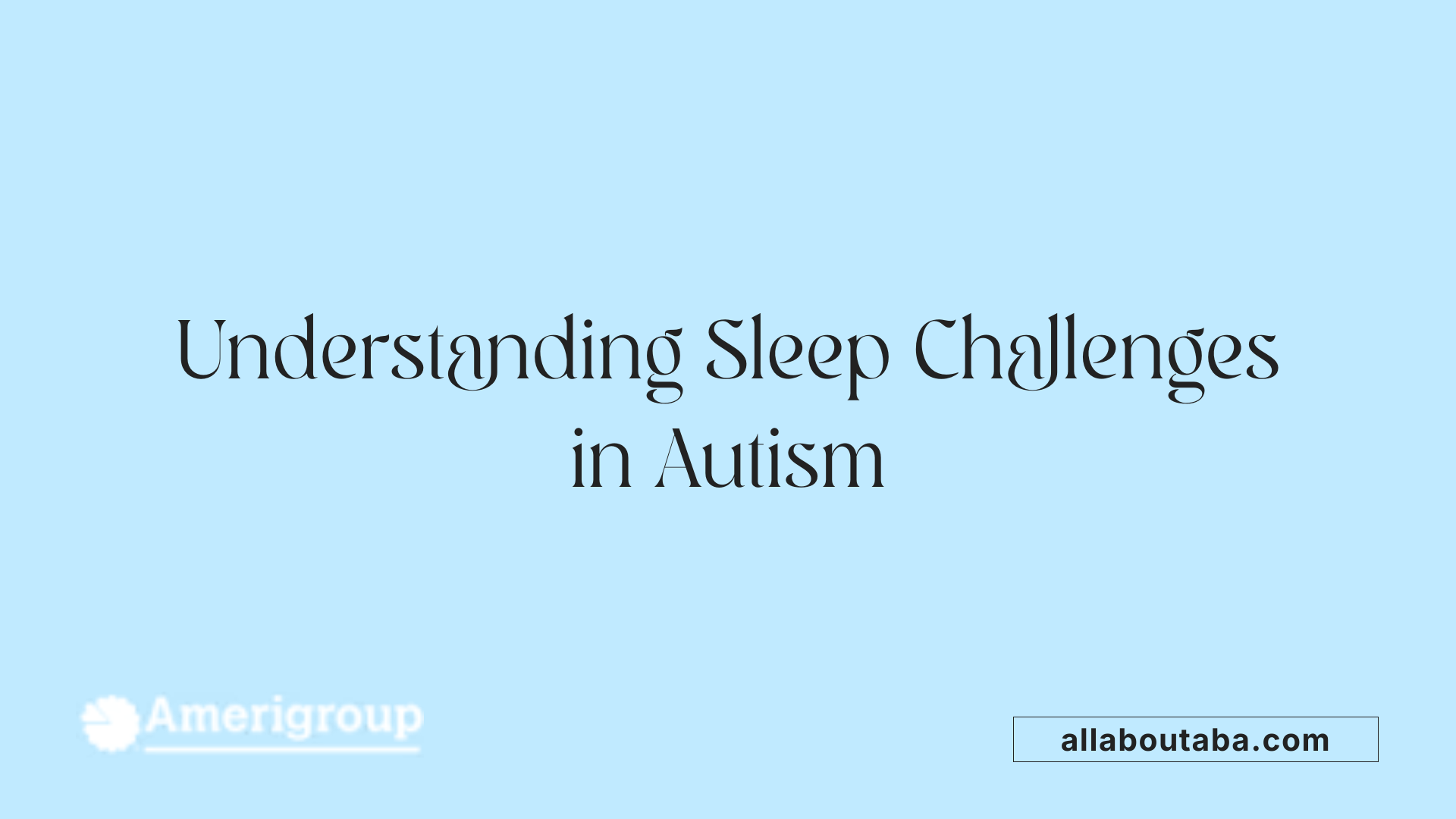 Children and adolescents with autism spectrum disorder (ASD) often experience a range of sleep disturbances that can significantly impact their daily functioning and well-being. These issues include difficulty in falling asleep, maintaining sleep throughout the night, frequent night wakings, early morning awakenings, and irregular sleep patterns. Such problems are highly prevalent, affecting approximately 50% to 80% of individuals with autism, which is considerably higher than in typically developing peers.
Children and adolescents with autism spectrum disorder (ASD) often experience a range of sleep disturbances that can significantly impact their daily functioning and well-being. These issues include difficulty in falling asleep, maintaining sleep throughout the night, frequent night wakings, early morning awakenings, and irregular sleep patterns. Such problems are highly prevalent, affecting approximately 50% to 80% of individuals with autism, which is considerably higher than in typically developing peers.
Several factors contribute to these sleep challenges. Sensory sensitivities, a common feature of autism, such as hypersensitivity to light, sound, or touch, can make it hard for children to settle into a restful state. Behavioral aspects, like resistance to bedtime and attachment to routines, also play a role. Medical conditions prevalent in autism, including sleep apnea, gastroesophageal reflux (GERD), seizures, and abnormal melatonin regulation, further complicate sleep patterns.
Biological differences are notable as well. Variability in circadian rhythms—the internal biological clock—can cause delays in sleep-wake cycles. Abnormalities in neurotransmitters like GABA, serotonin, and glutamate, along with genetic factors affecting melatonin synthesis and secretion, are linked to sleep difficulties in this population.
The impact of these sleep problems extends beyond the individual. Poor sleep quality often leads to increased behavioral issues such as tantrums, aggression, hyperactivity, and mood swings. It can also impair learning, memory, and social interactions. For families, ongoing sleep disturbances can cause significant stress and reduce overall quality of life.
Managing sleep issues in autism involves a comprehensive approach. Behavioral strategies like establishing consistent bedtimes and routines, creating a quiet, dark sleep environment, and encouraging independent sleep are foundational. Environmental modifications, such as minimizing screen time before bed and using sensory tools like weighted blankets, may also help. When behavioral interventions are insufficient, medical options such as melatonin supplements have shown promising results in improving sleep onset and duration under healthcare supervision.
Overall, understanding the complex interplay of sensory, behavioral, medical, and biological factors is crucial for effectively addressing sleep problems in children and adolescents with autism. Tailoring interventions to each individual's needs can lead to better sleep quality and enhanced daily functioning.
Underlying Causes and Contributing Factors

What underlying causes and factors contribute to sleep disturbances in individuals with autism?
Sleep problems in children and adolescents with autism spectrum disorder (ASD) are typically the result of a combination of biological, neurological, behavioral, and environmental influences. One of the main biological factors involves abnormalities in brain chemicals called neurotransmitters, including serotonin, GABA, and melatonin. These chemicals regulate sleep processes and circadian rhythms, and their irregularities can lead to difficulties in falling asleep or maintaining sleep.
Genetic factors also play a prominent role. Variations in genes that control melatonin production and receptor function can disrupt sleep-wake cycles. These genetic influences often contribute to the abnormal sleep architecture observed in autistic individuals, including reduced REM sleep and altered non-REM patterns.
Circadian rhythm disruptions are common in autism, partially caused by genetic mutations affecting the biological clock. These disruptions impact the normal timing of sleep and wakefulness, often resulting in irregular sleep schedules.
Sensory sensitivities are another critical factor. Many children with autism are hypersensitive to light, sound, or textures, which can make it difficult to relax in their sleep environment and fall asleep. This heightened arousal state, combined with difficulty winding down, further complicates sleep initiation.
Additionally, medical comorbidities such as sleep-disordered breathing, including obstructive sleep apnea, and other conditions like gastroesophageal reflux or restless legs syndrome (RLS) can interfere with quality sleep. Anxiety and behavioral challenges also contribute, often making it harder for children to settle or return to sleep after waking.
The interplay of these factors means that sleep disturbances in autism are multifaceted and often require personalized assessment and interventions. Addressing underlying neurochemical imbalances, managing environmental sensitivities, and treating co-occurring medical conditions are essential steps toward improving sleep outcomes for autistic individuals.
Diagnosis and Assessment of Sleep Issues
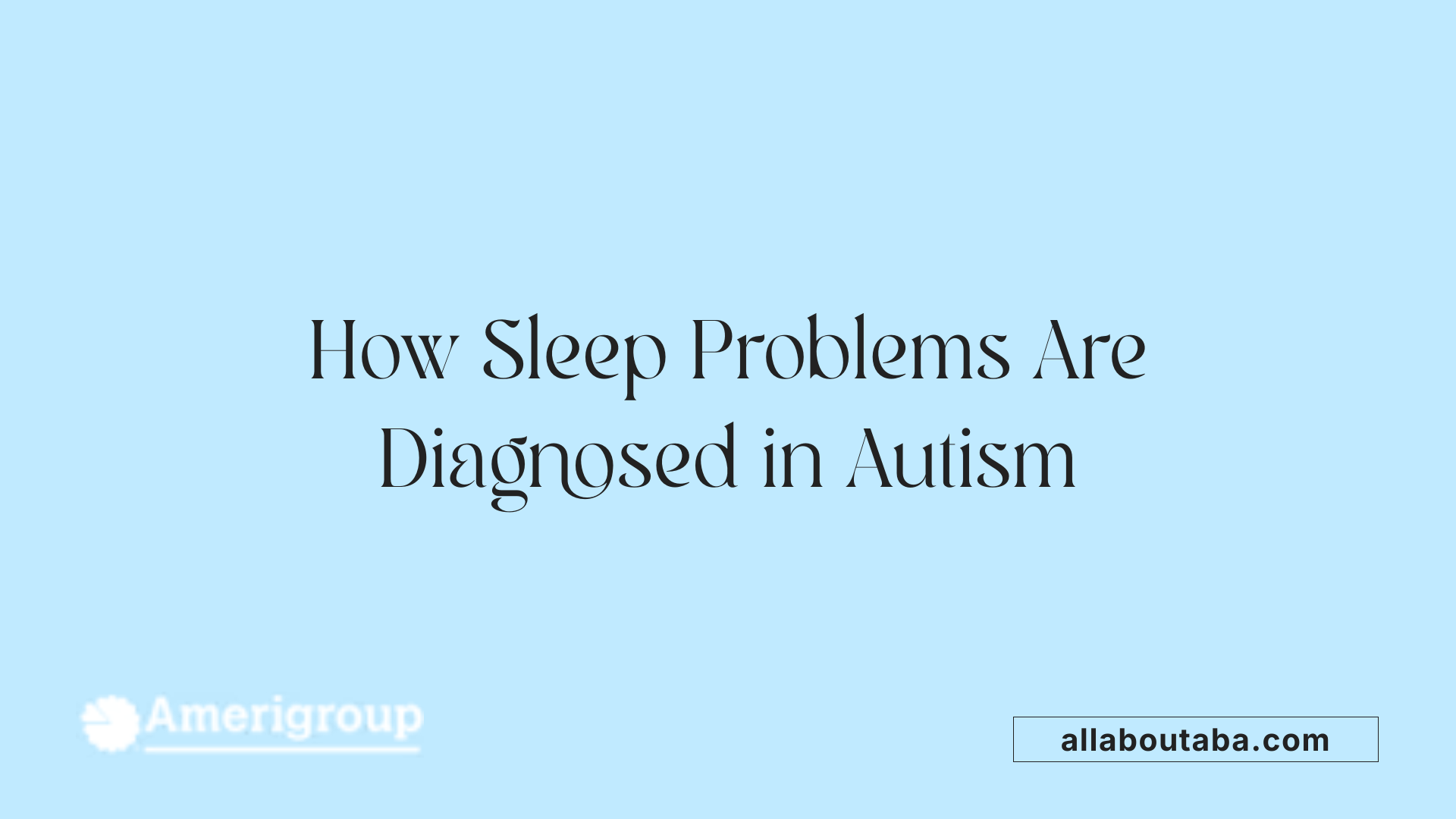
How are sleep issues diagnosed and assessed in individuals with autism?
Diagnosing sleep problems in children and adolescents on the autism spectrum involves a combination of personal, behavioral, and physiological evaluation methods. Clinicians typically start with detailed sleep histories gathered from parents or caregivers. These histories often include questionnaires like the Children’s Sleep Habit Questionnaire (CSHQ) and sleep diaries, which help document common issues such as difficulty initiating sleep, frequent night wakings, or early morning awakenings.
In addition to subjective reports, objective measures are utilized for a clearer understanding of sleep patterns. Actigraphy involves wearing a wrist device that tracks movement to estimate sleep-wake cycles over days or weeks. This method is especially useful because it is less intrusive and can be used comfortably at home.
Polysomnography, or sleep studies, provide a comprehensive physiological assessment by recording brain activity, eye movements, muscle activity, heart rate, and breathing during sleep. While valuable, conducting polysomnography can sometimes be challenging for children with sensory sensitivities or anxiety. Therefore, alternative observational tools like videosomnography are also employed. These involve recording sleep behaviors at home, allowing clinicians to observe behaviors such as limb movements or sleep resistance.
Together, these assessment tools help identify specific sleep issues, which then inform targeted interventions. Regular monitoring through follow-up assessments can evaluate the effectiveness of treatments like behavioral strategies or melatonin supplementation, contributing to improved sleep quality for children with autism.
Non-Pharmacological Strategies for Improving Sleep

What evidence-based, non-pharmacological strategies can help improve sleep in autistic individuals?
Addressing sleep problems in children and adolescents on the autism spectrum often involves various non-medication approaches that focus on behavioral, environmental, and sensory strategies.
One effective method is establishing consistent and predictable bedtime routines. Using visual supports, such as picture schedules or social stories, can help children understand and anticipate bedtime activities, creating a calming transition to sleep.
Creating a sleep-friendly environment is also crucial. This includes minimizing light and noise, managing sensory stimuli, and making the space comfortable with tools like weighted blankets or compression sheets. While research is limited, these sensory tools are generally well-tolerated and can promote relaxation, possibly improving sleep quality.
Behavioral techniques are key components of intervention. Positive reinforcement encourages children to engage in sleep-friendly behaviors, such as staying in bed or falling asleep independently. Stimulus fading can be used to gradually transition children away from co-sleeping by slowly increasing physical distance between parent and child.
Scheduled awakenings are another strategy, especially for managing night terrors, where the child is gently woken before episodes typically occur.
Encouraging daytime physical activity, including walking, dancing, jumping, or swimming, helps regulate the child's sleep-wake cycle by increasing overall tiredness at bedtime.
Other practices include adopting good sleep hygiene: setting a consistent bedtime and wake-up time, reducing screen exposure before sleep, and incorporating relaxation techniques, such as massage exercises, to reduce anxiety and physical discomfort.
Consistent routines, combined with sensory management and behavioral reinforcement, support better sleep patterns for children with autism. Engaging caregivers and maintaining uniform practices at home are critical for lasting improvements.
| Strategy | Description | Additional Notes |
|---|---|---|
| Visual supports and social stories | Use pictures and stories to prepare child for bed | Enhances understanding and reduces bedtime resistance |
| Environmental modifications | Dark, quiet, sensory-optimized sleep space | Promotes comfort and minimizes stimuli |
| Sensory tools | Weighted blankets, compression sheets | Can help relaxation, well-tolerated but effects vary |
| Reinforcement and stimulus fading | Rewards for independent sleep, gradual distancing | Supports behavioral change |
| Scheduled awakenings | Wake child before usual night terror episodes | Helps reduce severity and frequency |
| Physical activity during the day | Walking, dancing, jumping, swimming | Regulates circadian rhythms and sleep pressure |
Overall, these approaches, aimed at improving sleep hygiene, sensory comfort, and behavioral routines, are supported by clinical research and are recommended as first-line, non-pharmacological options for children and adolescents with autism.
Practical Tips and Techniques for Caregivers
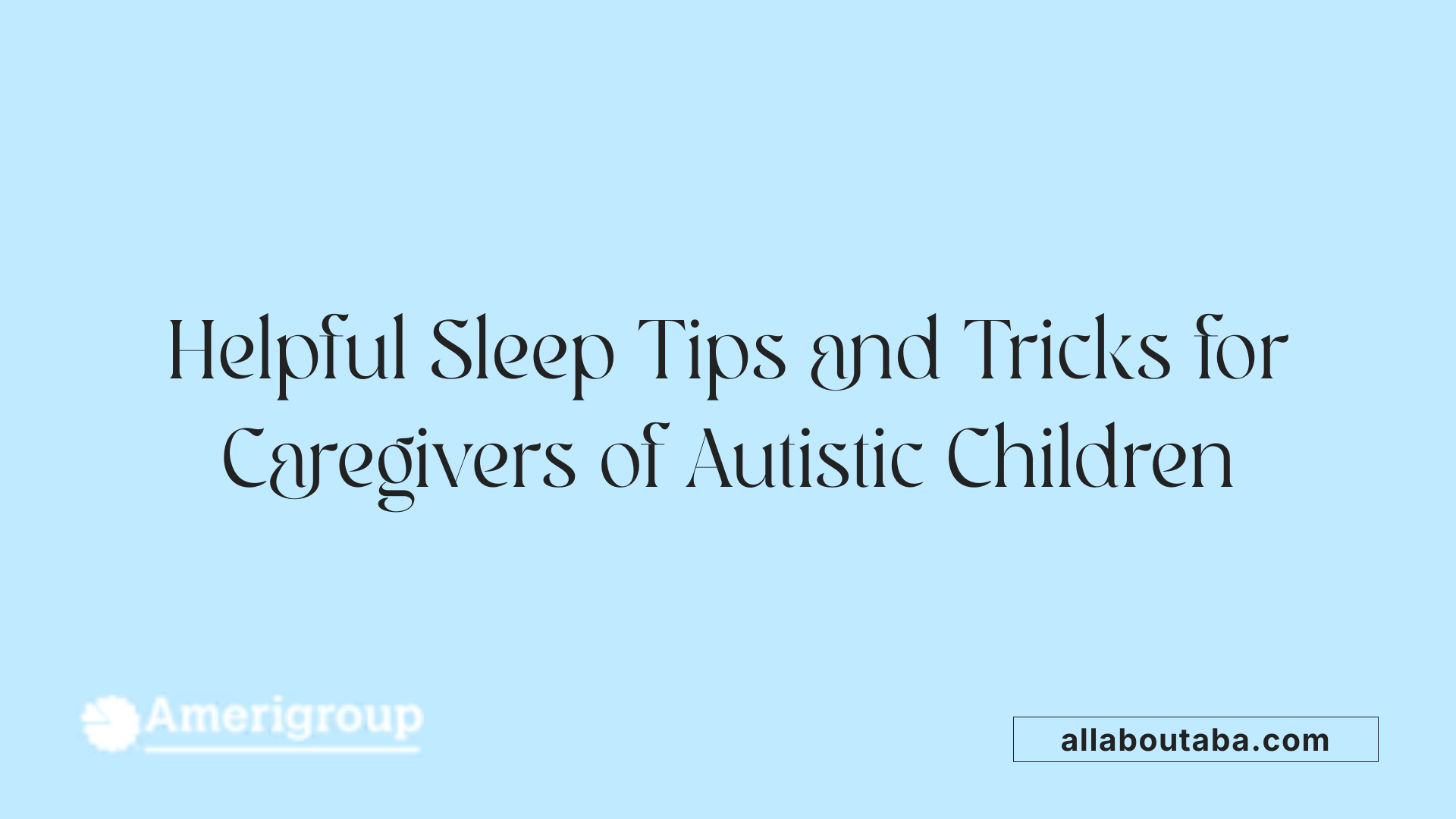
What practical tips can caregivers use to manage sleep difficulties in autistic children?
Managing sleep problems in children with autism involves a combination of consistent routines, sensory support, environmental adjustments, and behavioral strategies. Establishing predictable, calming bedtime routines is crucial. Using visual supports, such as pictures or social stories, helps children understand what to expect and can reduce anxiety around bedtime.
Creating an ideal sleep environment is equally important. Keeping the bedroom dark with blackout curtains, maintaining a cool temperature, and reducing noise levels can make it easier for children to fall asleep and stay asleep. Incorporating sensory tools such as weighted blankets or soft, calming fabrics can help soothe children who have sensory sensitivities.
Relaxation techniques like deep breathing exercises, warm baths, or playing gentle music can help children relax physically and mentally before sleep. Teaching children to wind down gradually through sleep training techniques is effective. This can include methods like gradual withdrawal or systematic encouragement to fall asleep independently.
Visual schedules and sleep passes are helpful for children with limited verbal skills, providing clear cues on bedtime routines and sleep expectations. These tools promote consistency and reduce resistance.
Caregivers should also discuss with healthcare providers about potential pharmacological options such as melatonin, which can be particularly beneficial for children with irregular melatonin levels or circadian rhythm disruptions. Combining these approaches provides a comprehensive strategy to improve sleep quality and overall well-being.
Comprehensive and Holistic Support Approaches

What are effective comprehensive approaches to support sleep health in individuals with autism?
Supporting sleep health in children and adolescents with autism requires a multifaceted strategy that combines behavioral, environmental, medical, and parental approaches. These methods work together to address the unique challenges faced by individuals on the spectrum.
Behavioral interventions, often rooted in Applied Behavior Analysis (ABA), form the foundation of many sleep support plans. These include establishing consistent bedtimes and routines, using calming activities, and rewarding successful sleep behaviors through positive reinforcement. Techniques like stimulus fading—gradually increasing the distance between the child and sleep cues—also help children learn to fall asleep independently.
Creating an optimal sleep environment plays a crucial role. This involves ensuring a dark, quiet, and comfortable setting, with temperature control and minimal noise. Visual schedules and visual cues can assist children with limited communication skills in understanding bedtime routines. Using tools such as bedtime passes or visual timers helps promote predictability and reduce anxiety.
Sensory accommodations are particularly beneficial for children with hypersensitivities. Weighted blankets and compression sheets are well-tolerated options that may improve sleep quality by providing calming proprioceptive input. These tools can also positively impact daytime behavior.
Medical evaluations are essential when sleep disturbances persist. Addressing underlying conditions such as obstructive sleep apnea, gastroesophageal reflux, or anxiety can greatly enhance sleep. For instance, managing sleep apnea with surgical or medical treatments and treating iron-deficiency RLS can substantially improve sleep patterns.
In cases where behavioral and environmental adjustments are insufficient, healthcare providers often recommend melatonin supplementation. When used under medical supervision, melatonin can significantly reduce sleep onset latency, extend total sleep time, and improve overall sleep efficiency.
Parent education and support are integral components. Teaching caregivers about sleep hygiene, behavioral techniques, and how to implement consistent routines empowers families to manage sleep challenges effectively. Ongoing support helps sustain these practices and adapt strategies as needed.
By integrating these diverse approaches, a tailored, holistic plan can significantly improve sleep health, leading to better daytime functioning, mood, and overall quality of life for children and adolescents on the autism spectrum.
Emerging Research and Future Directions
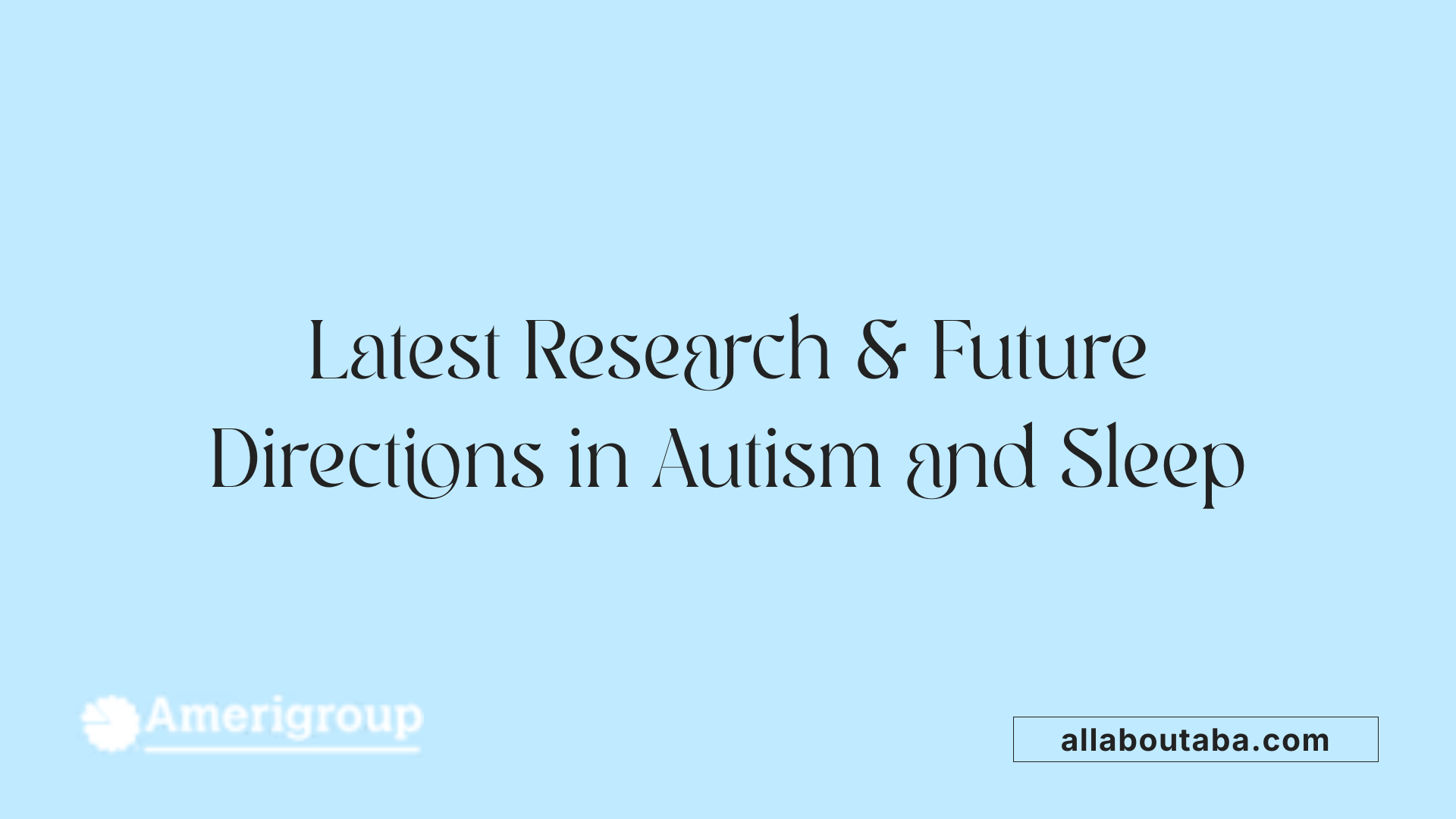
What recent research insights are available regarding the mechanisms and management of sleep problems in autism?
Recent scientific studies have expanded our understanding of why sleep issues are so common in children and adolescents on the autism spectrum. Researchers have identified genetic factors, such as mutations in genes like ASMT and MTNR, which are involved in regulating melatonin, the hormone critical for sleep. Abnormalities in neurotransmitter systems, including GABA, serotonin, dopamine, and histamine, also play a role, affecting brain excitability and sleep regulation.
Neuroimaging studies reveal that certain brain regions, such as the thalamic reticular nucleus, may function differently in autistic individuals, disrupting normal sleep-related neural circuits. This can lead to altered sleep architecture, with less REM sleep and fewer sleep spindles, which are essential for memory consolidation and overall sleep quality.
Circadian rhythms, the body's internal clock, are often irregular in autism. Genetic variations and neurotransmitter imbalances can cause delayed sleep onset and irregular sleep patterns, making consistent sleep schedules more difficult.
Management approaches are increasingly guided by these scientific insights. Behavioral interventions, improved sleep hygiene, and medication like melatonin—supported by recent formulations designed for children with autism—are effective strategies. Researchers are also employing advanced tools like wearable devices to objectively measure sleep patterns, helping to tailor treatments further.
Ongoing clinical trials are exploring innovative therapies, including targeted pharmacological agents and neurostimulation techniques, to correct neurobiological abnormalities. The integration of neurobiological and genetic findings is paving the way for personalized treatment models, promising better sleep and behavioral outcomes for individuals with autism.
| Research Area | Key Discoveries | Impact on Management |
|---|---|---|
| Genetic Studies | Mutations affecting melatonin production | Development of targeted pharmacological treatments |
| Neurotransmitter Abnormalities | Dysregulation of GABA, serotonin, dopamine | Enhanced behavioral strategies and drug options |
| Brain Circuitry | Alterations in thalamus and neural circuits | Improved sleep assessment tools |
| Circadian Rhythms | Genetic polymorphisms linked to delayed sleep | Customizable sleep routines and interventions |
| Technology Use | Wearable monitors tracking sleep | Better monitoring and personalized options |
As research continues, a more precise understanding of sleep disturbances in autism is shaping future therapies. The goal is to customize approaches based on individual neurobiological profiles, improving overall quality of life.
Search for "Research on autism and sleep mechanisms" online to find the latest updates and in-depth studies that are driving this promising field forward.
Supporting Sleep Health for a Better Quality of Life
Addressing sleep challenges in autism requires a multifaceted approach, integrating behavioral, environmental, medical, and educational strategies. Understanding the underlying causes, utilizing precise assessment tools, and applying evidence-based interventions can significantly improve sleep quality. Continued research advances and caregiver education are vital for developing personalized treatments that enhance not only sleep but overall well-being and daily functioning for individuals with autism. Promoting better sleep ultimately supports improved behavior, mood, cognitive development, and family health, fostering a more fulfilling life for those affected by ASD.
References
- Interventions | Center for Sleep in Autism Spectrum Disorder
- Treating Sleep Disorders
- Sleep and autism
- Autism and Sleep Issues
- An update on the cause and treatment of sleep disturbance ...
- Sleep and Autism: Current Research, Clinical Assessment ...
- ATN/AIR-P Strategies to Improve Sleep in Children with ...
- Assessment of Sleep in Children with Autism Spectrum ...
- Sleep and Autism: Current Research, Clinical Assessment ...
Other articles
Recent articles

Best Practices For Autism-Friendly Fitness And Recreation Centers

Best Ways To Promote Healthy Social Media Use For Autistic Teens

How To Help Autistic Children Cope With Public Speaking

Autism And Strategies For Managing Unexpected Changes

Best Podcasts About Autism For Parents And Educators

Autism And The Impact Of Seasonal Changes On Behavior

The Role Of Diet In Managing Co-Occurring Conditions With Autism

Sleep Challenges In Autism And Practical Solutions

Best Ways To Build Daily Routines For Autistic Children

Best Practices For Supporting Autistic Entrepreneurs

Autism And Strategies For Navigating Large Social Gatherings

Adaptive Sports And Recreational Activities For People With Autism

Autism And The Benefits Of Story-Based Learning Activities

Understanding The Role Of Play In Autism Development

Autism And The Impact Of Environmental Noise On Learning

How To Create Autism-Friendly Community Spaces

Autism And Chronic Health Conditions: What To Know

The Role Of Care Managers In Autism Life Planning

How To Teach Social Boundaries To Autistic Children

How Autistic Individuals Experience Empathy Differently

How To Support Autistic Employees In Remote Work Settings

Autism And The Relationship Between Motor Skills And Learning

How To Create Community Resource Guides For Autism Families

How To Teach Daily Living Skills To Autistic Teens

Autism And The Impact Of Mind-Body Practices On Stress Reduction

Autism And The Benefits Of Outdoor Group Activities

How To Create Autism-Friendly Sensory Paths In Schools

Best Practices For Autism-Friendly Park And Recreation Areas

Autism And Strategies For Reducing School Refusal

Supporting Autistic Individuals In Public Speaking

The Role Of Diet In Managing Autism Symptoms

The Benefits Of Gardening Clubs For Autism Social Development

How To Prepare Autistic Children For Dental Visits

Autism And Employment: Career Paths That Work

Best Practices For Autism-Friendly Hotels And Lodging

The Impact Of Screen Time On Autism Development

Autism Screening Tools For Early Childhood

The Role Of Physical Exercise In Autism Therapy

Best Strategies For Supporting Autistic College Students

The Role Of Technology In Autism Early Detection

Sensory-Friendly Classroom Design Ideas For Autistic Students

The Role Of Speech Therapy In Building Social Communication Skills

Best Strategies For Handling Autistic Burnout In Adults

Autism And The Importance Of Predictability In Routine

Autism And Peer Education: Teaching Acceptance In Schools

Best Practices For Sensory-Friendly Libraries And Reading Rooms

Self-Advocacy Skills For Autistic Adults

The Role Of Technology In Autism Peer Communication

Promoting Physical Activity In Children With Autism

How To Prepare Autistic Children For Medical Procedures

The Role Of Social Media In Autism Advocacy And Awareness

The Impact Of Sensory Rooms In Public Facilities For Autism

How To Create An Autism-Friendly Holiday Celebration

Best Practices For Inclusive Education For Autistic Students

Autism And Mental Health: Recognizing Signs Of Distress

Best Practices For Sensory-Friendly Waiting Rooms

The Role Of Teachers In Early Autism Red Flag Identification

Autism-Friendly Housing Design Features

Autism-Friendly Housing Design Features

How Environmental Modifications Improve Autism Outcomes

Autism And Technology-Based Learning Tools

Supporting Autistic Children Through Changes In Routine

The Link Between Autism And Working Memory Challenges

Best Practices For Autism-Friendly Cooking Classes

Autism And The Benefits Of Structured Music Lessons

Best Books To Teach Kids About Autism Acceptance

Sensory Diets And Their Benefits For Autism Management

How To Prepare Autistic Teens For Driver’s Education

How To Teach Autistic Teens About Healthy Relationships

The Role Of Visual Prompts In Building Daily Habits For Autism

Addressing Sleep Regression In Children With Autism

Understanding Social Stories And How They Help Autistic Children

Navigating Insurance Coverage For Autism Therapy Services

How To Prepare Autistic Adults For Independent Travel

Supporting Autistic Individuals In Volunteer Work

How Mindfulness Practices Can Support Autism Well-Being

Understanding Hyperfocus And Special Interests In Autism

Understanding Stimming As A Self-Regulation Tool

Sensory-Based Interventions For Autism At Home

Best Ways To Introduce Self-Advocacy In Autistic Teens

Best Ways To Support Autistic Employees In Customer Service Roles

Best Practices For Autism-Friendly Volunteer Programs
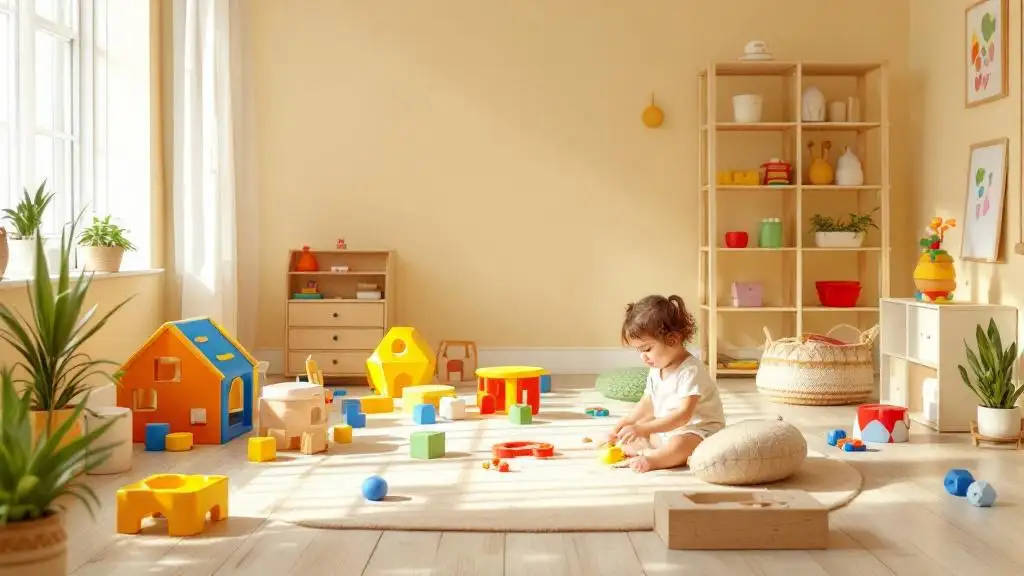
Autism And The Benefits Of Sensory Play For Emotional Growth
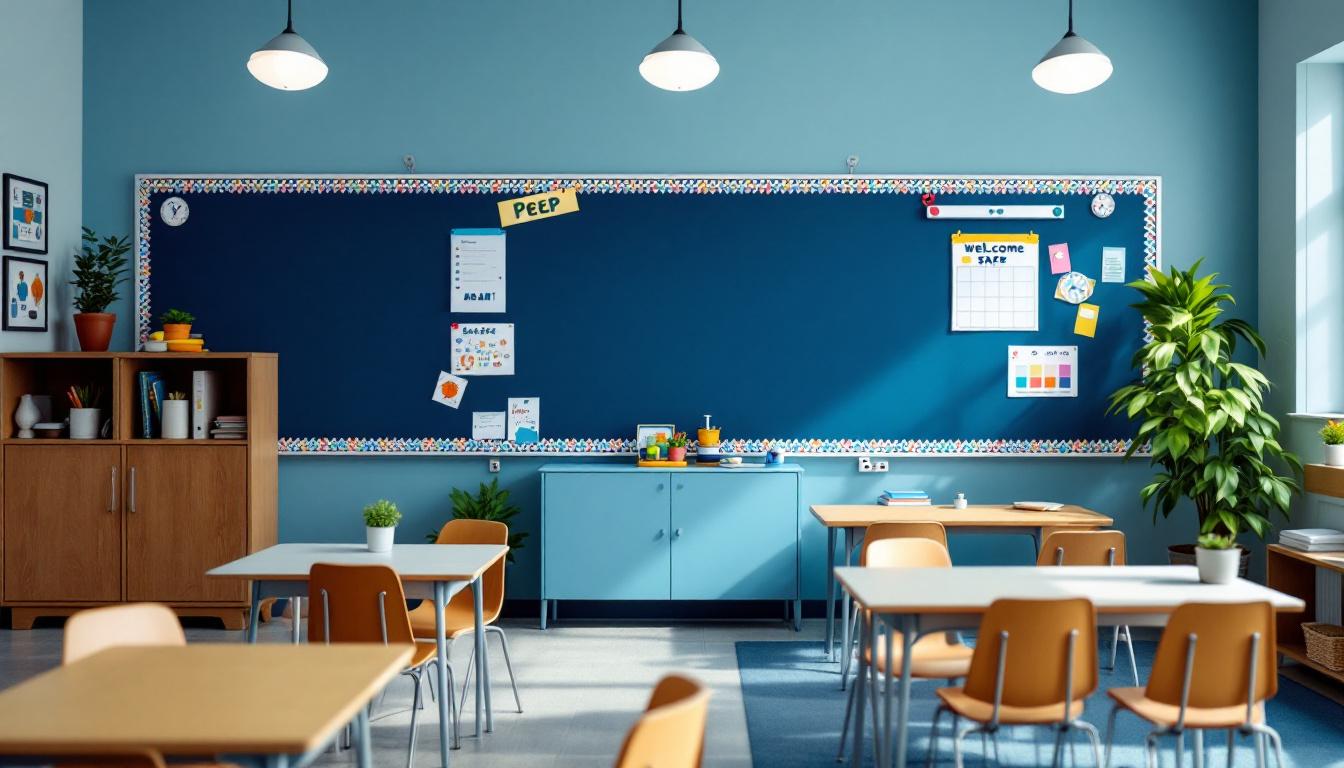
Autism And Strategies For Building Peer Relationships

Understanding How Autism Affects Memory Processing

Autism And Strategies For Building Coping Skills In Teens

The Role Of Parent Training In Autism Intervention Programs

Autism-Friendly Workplace Accommodations

Using Visual Timers For Autism Time Management

What Is ABA Therapy?

Autism and Sleep

Do Plastic Toys Cause Autism?

Autism Facial Expressions

Autism and Motor Skills

Which Parent Carries The Autism Gene?

Autism Symbols & Colors

Rett Syndrome: Symptoms, Causes, and Treatment

Self-Diagnosed Autism

Autism and Sound Sensitivity

Autism With Speech Delay
We’re All About You, Your Family, and Your Child

